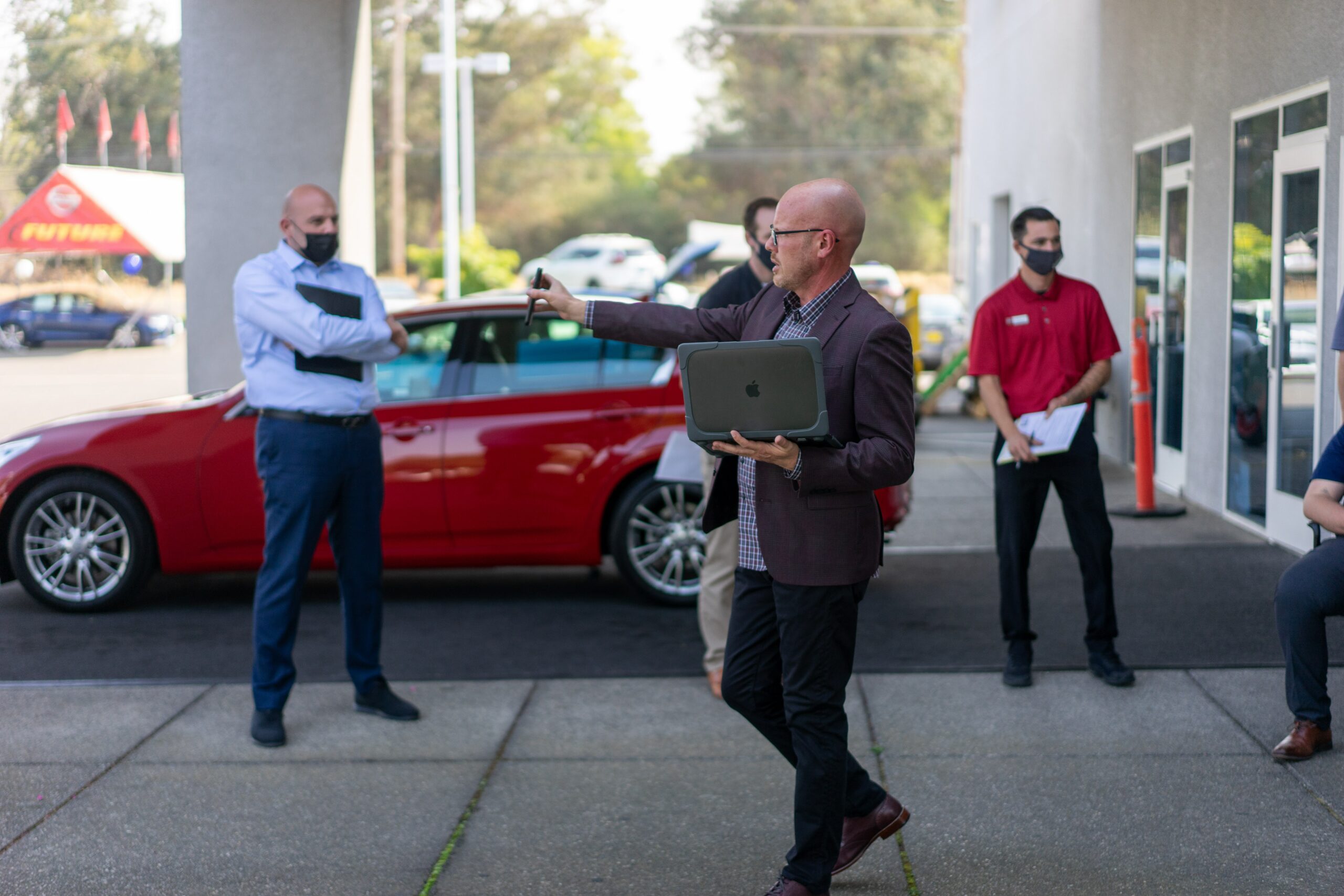After recently reading Daniel Pink’s, “To Sell is Human: The Surprising Truth About Moving Others”, I was specifically drawn to the story about the car sales guy and how often in my own career – even today – I still run across this style of sales. I’m not sure that it makes sense to describe this as “car salesy” anymore. It seems more suitable to describe this style as self-serving versus selfless. So much has been written about this selfless approach. It is not a new concept in any way – Ron Willingham has been writing about it, speaking about it and coaching sales people on how they can tap into it (when they can authentically do so) for quite a few years. He has perfectly coined it “authentic” or “integrity” selling.
It boils down to simple concepts that, when authentically done, change everything.
1. Do you believe that by working with you, the life of the person who is potentially going to buy what you sell will get better? I have a friend who is a mortgage broker. He was a mortgage broker during the years that people were doing no-doc loans and many folks in his industry were buying boats, houses and riding the proverbial wave. He didn’t. He knew that there were those who could afford the loans and those who couldn’t. He worked towards helping everyone, but didn’t partake in making himself richer at other people’s expense whether it would be a ballooning payment an increased interest rate or whatever. He is still in the industry today, doing great.
2. Are you and the person who is buying from you aware of other potential options and is yours still better? Before closing the deal, flesh out the options available and help determine what is best. This is not always simple and, in many cases, requires thoughtful reflection. In my business, there are the basics – are the skills required for the role and the responsibility of the role a fit. From there, it makes sense to go quite a bit deeper – is there a possibility of a counter-offer or a competing offer. Deeper yet, there are cultural dynamics, training opportunities, size of company and that company’s funding along with communication during the interview and whether the company is transparent with where they are where they are hoping this new hire will help them go and vice versa. When everyone understands what “could” happen in the way of options, a better decision can be made as to how to proceed.
3. Disclose the benefits as well as the negatives. As Pink describes in his book, there is way more information available to buyers today than there ever was in the past. It has never made sense to only talk about the upside because everyone knows there are possible downsides to every deal. Even doctors admit they sometimes have a hard time explaining the risks of performing the surgery or the risks of not doing the surgery, but everyone knows they are there. The more your salesperson explains, the better informed you are and the easier it will be to decide.
4. When you don’t understand or you need clarification on a ‘rule of engagement’ ask your buyer to explain themselves. I recently had to go to an oral surgeon who was going to identify my hurting tooth and then perform a root canal. He poked, prodded, applied cold, picked and hammered in the area where I had pain – determining after all of that – I didn’t need a root canal. “Unless, of course”, he asked, “you want one?” Would anyone say yes to that I inquired. “yes” was his answer. Seems that some people are ready to roll the dice on the possibility that the right tooth gets worked on and the pain disappears. Thankfully, he asked me for clarification and learned that my tolerance for whatever was bothering me was far greater than my interest in a root canal.
5. Learn more about your buyer than the basic reasons behind their interest in buying. This has absolutely nothing to do with the yucky – “hey, is that a deer head on your wall? So, you like to hunt?” Personally, I couldn’t be more turned off either being asked to do that by former sales managers or having a sales person do it to me. It feels very disingenuous and salesy. Pink describes mimicry in his book and I agree that it can certainly resonate in sales, if it isn’t genuine. When it isn’t genuine, however, people know and it just feels gross. If you can check-off the first few points on this list, mimicry will squash them completely and flattery will get you tossed out even faster. Learning about your buyer requires something much different than a glance at their office walls and photos on their desk. It requires asking questions and listening to the answers. The caveat here is that the questions aren’t about getting you to the “close”, they are related to getting you closer to your buyer. Genuine, interesting, thoughtful questions.
6. Be selfless. When people ask, “sure, that would be great if you did that for me, but what benefit will you get by helping me with that?” you are heading in the right direction. When your answer is, truthfully, that it helps them achieve their intended goal, you are being selfless. As Brian Blakely says, “give to give, don’t give to get”
I’ve had lots of sales training throughout my career. Some of the folks who provided that training may have also arrived at these places that I find myself at today, but I suspect many didn’t. To sell is human – I totally agree with the concept that we are all selling something if not only ourselves. To sell the same way as everyone has been teaching for decades is simply not natural and not required.

